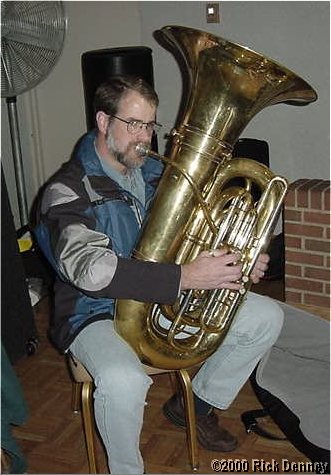
As with photography, music provides an outlet for an analytical engineer to express disciplined emotion. But it also provides an opportunity to express an interest in the apparatus and in the physical processes that make the music possible. If you want to hear wonderful performing, this is the wrong place, but there are many right ones. If you share my curiosity for the hardware and acoustical processes, though, some of this might be of interest.
A while back I undertook a strange project. I decided to add an F tuba to my collection, particularly if I could find one that had a different sound than my current small F. Plus I had the need to destroy something. Read about it here.
Tuba players are rarely content with one horn, and I have been more discontented than most. Read about the current fleet here.
Question often asked: How do you change those clattery S-linkages with ball-joint linkages on rotary tubas? I made this modification to a B&S F tuba that I had recently acquired, and this time I took pictures as I did it.
Once upon a time, a York Master came into my life. What makes it different from the Miraphone? I try to answer this eternally debated question here.
I got a minidisc recorder for my birthday. What is any self-respecting engineer supposed to do with that? Find out the answer here, where I analyze the tuba sound.
Discussions abound on various forums about the sizes of tubas. You'd think tuba players have a complex about the subject. While talk abounds, pictures don't. So I have compiled, and from time to time updated, a series of comparison pictures where my York Master sits side-by-side with a number of well-known tubas. Hopefully, this will help folks sort out the wacky system tuba makers use to described instrument size. Find it here.
A long-term project is to compile an interesting documentation of 4/4 York tubas. Everyone knows about the 6/4 instruments because of the famous tubas owned by Arnold Jacobs and now owned by the Chicago Symphony. But the 4/4 instruments are just as interesting. The Gallery is what I hope will be a growing documentation of these instruments, and I've also compared an old York 4/4 tuba as depicted in a catalog from the 1920's with my York Master, a 1960's import from Germany.